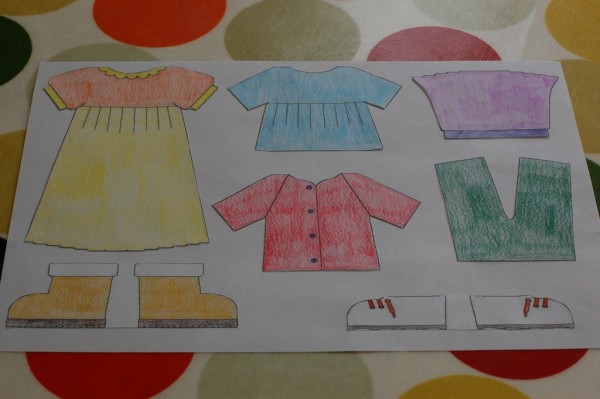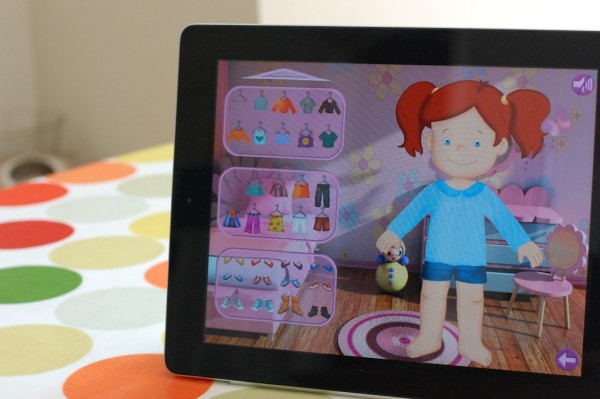
Last week was Speech Pathology Australia Week & talk on twitter turned to favourite toys for therapy. I love toys that can be used to work on several different targets. Meet Dog, he’s one of my favourites because he’s so versatile, and the children love him! Wikipedia tells me that Pound Puppies were sold in the 1980s, I think I was given mine for Chanukah when I was 8 or 9 years old. Who knew he’d be starring in therapy sessions more than 20 years later!
I’ve recently been dressing up Dog to work on the verb: wearing. Here’s what a therapy session might look like.
When I teach a new word, I begin by modelling it a lot in different contexts. The child and I take turns choosing items for Dog to wear, and I comment: “wow, Dog is wearing glasses. I’m wearing glasses and Dog is wearing glasses.”
Accessorising ourselves

Then we start putting on funny accessories ourselves and I keep modelling the target word: “You’re wearing goggles, you’re ready for a swim.” “I’m wearing a monkey hat, it’s warm!” Children learn by doing; in this activity they’re wearing different things, while I model the word. It’s also fun to take photos of the child wearing different accessories, and talk about what they’re wearing in each photo.
Dressing paper dolls

Next we try a paper based activity, like this doll game. We dress the dolls (while I keep modelling the target word) and then I’ll try to cue the child in to using the word himself. I’ll say something like: “My doll is wearing a yellow dress and boots, your doll is…?”
There’s an app for that
 I found this free iPad app, which is good to end on. The child selects clothes and shoes for the doll – it’s another fun opportunity for more modelling and perhaps the child will be ready to use the word himself.
I found this free iPad app, which is good to end on. The child selects clothes and shoes for the doll – it’s another fun opportunity for more modelling and perhaps the child will be ready to use the word himself.
Tip: children want to keep trying different clothes on the doll. So when it’s time to talk about what she is wearing, I take a photo of the outfit and switch to the photo app. Then the child can’t change the clothes anymore and can focus on describing what she’s wearing!
Practise at home
I give the parents the paper dolls to take home, encourage them to practise the other activities as well, and remind them to talk about what they’re wearing throughout the day.
If your child is struggling to learn new words and you’d like an assessment or advice, get in touch.


